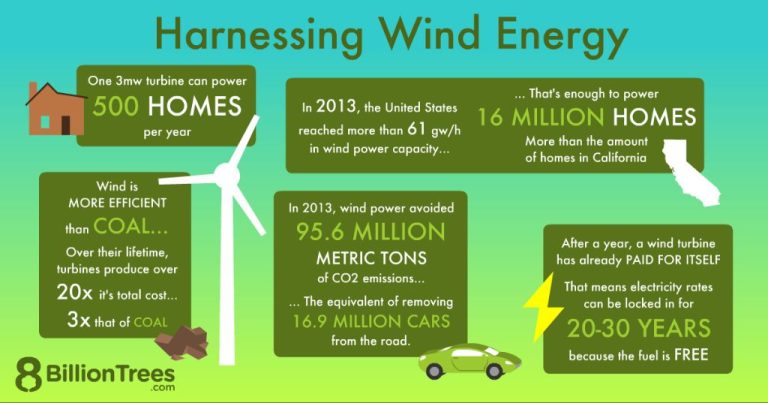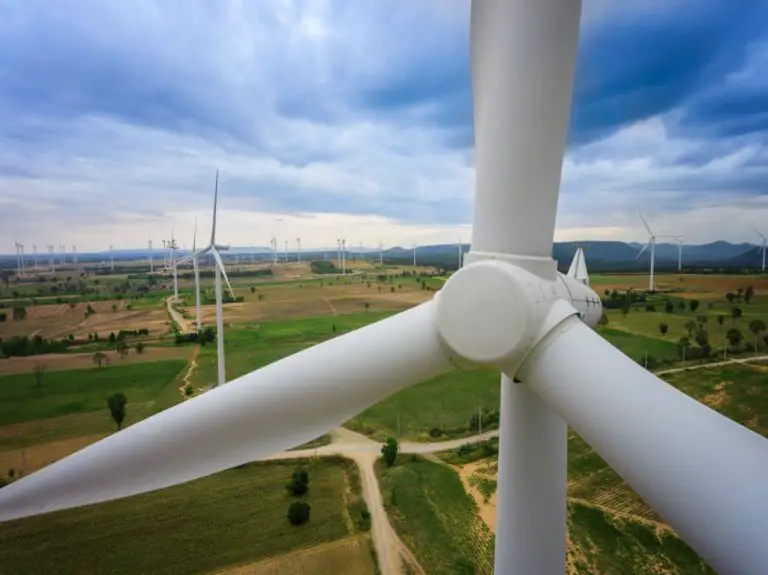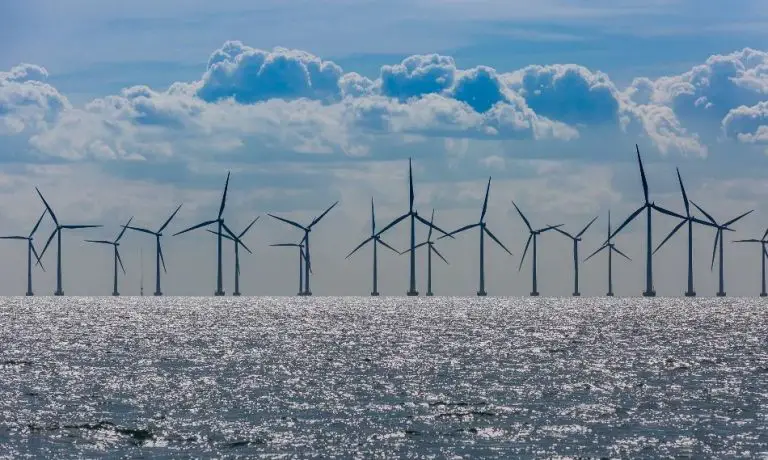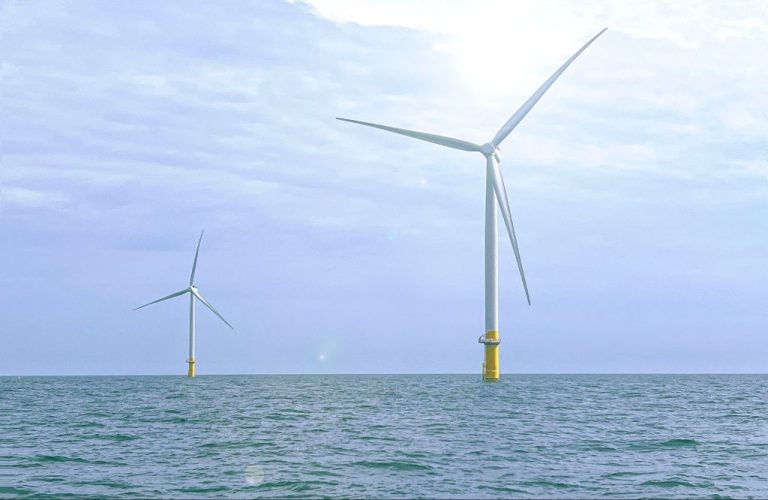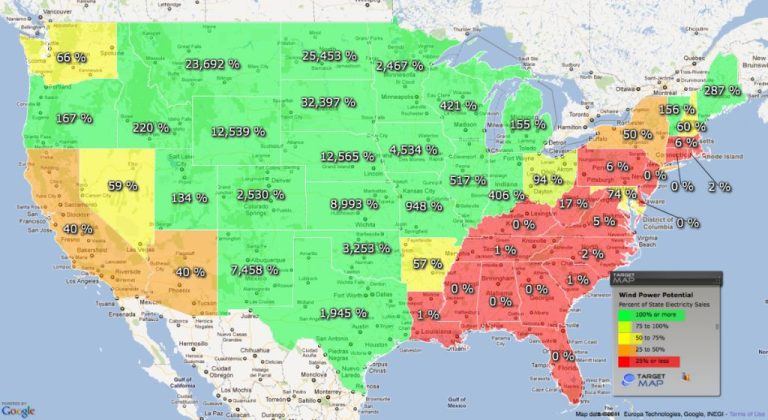How Reliable Is Wind As An Energy Source?
Wind energy is the process of converting the kinetic energy in wind into mechanical energy or electricity. Wind power has emerged as one of the leading renewable energy sources worldwide, with global capacity growing rapidly in recent decades. According to industry statistics, global installed wind capacity has increased from 6,100 megawatts (MW) in 1996 to over 597,000 MW in 2018.
Advantages of Wind Power
One of the main advantages of wind power is that it is a renewable and clean energy source (Enel Green Power). Wind energy does not produce any emissions or toxic waste, making it much better for the environment compared to fossil fuels. According to Enel Green Power, “wind power generation produces no atmospheric emissions or greenhouse gases” while also having a minimal land footprint with turbines using only a fraction of the land below them.
Because wind is plentiful, endless, and free, wind power is considered a renewable source of energy. Unlike fossil fuels which are finite, the wind can be harnessed as an energy source indefinitely. Wind power is also considered a green form of energy generation. Producing electricity from wind does not create any toxic byproducts. As countries work to reduce carbon emissions and create sustainable energy systems, wind power provides a viable renewable solution.
Intermittency and Variability
One of the main challenges with wind power is its intermittency and variability. Wind speeds constantly change due to natural fluctuations in weather patterns. According to a 2017 study, “Due to the intermittency of wind power, some believe that wind power will not be able to contribute significantly to power systems supply” (Ren et al.). This variability makes it difficult to integrate large amounts of wind power onto the grid and match supply with demand. Some grid operators are concerned that as more wind power comes online, the fluctuations and unpredictable output could potentially destabilize the grid.
There are a few ways to quantify wind power variability. One metric is the capacity factor, which measures a wind farm’s actual production over a time period compared to its maximum potential output if it operated at full capacity. According to the Department of Energy, the capacity factor for wind farms in the U.S. averages around 35% currently. This is an inherent challenge of harnessing the wind.
Overall, the intermittency and variability of wind speeds creates integration and grid reliability challenges that must be managed for higher penetration of wind power.
Improving Reliability
There are several ways to improve the reliability of wind power as an energy source. Advanced forecasting of wind patterns can help grid operators better prepare for variability in wind generation. Upgrading transmission infrastructure also allows for greater integration of wind onto the electric grid. Energy storage techniques, like batteries and pumped hydro storage, can store excess wind energy when generation is high and dispatch it when wind production is lower.
Advanced forecasting utilizes meteorological modeling and wind turbine power data to predict wind speed and power output from minutes to days ahead. This allows grid operators to schedule additional generation reserves when wind output is expected to be low and reduce reserves when high wind is forecasted (Wind Power Engineering, 2012).
Upgrading transmission lines, software, and other grid infrastructure enables greater amounts of wind to be integrated onto the electric grid reliably. Investments in transmission helps connect dispersed wind farms over a large geographic area to smooth out variability (IEEE, 2013).
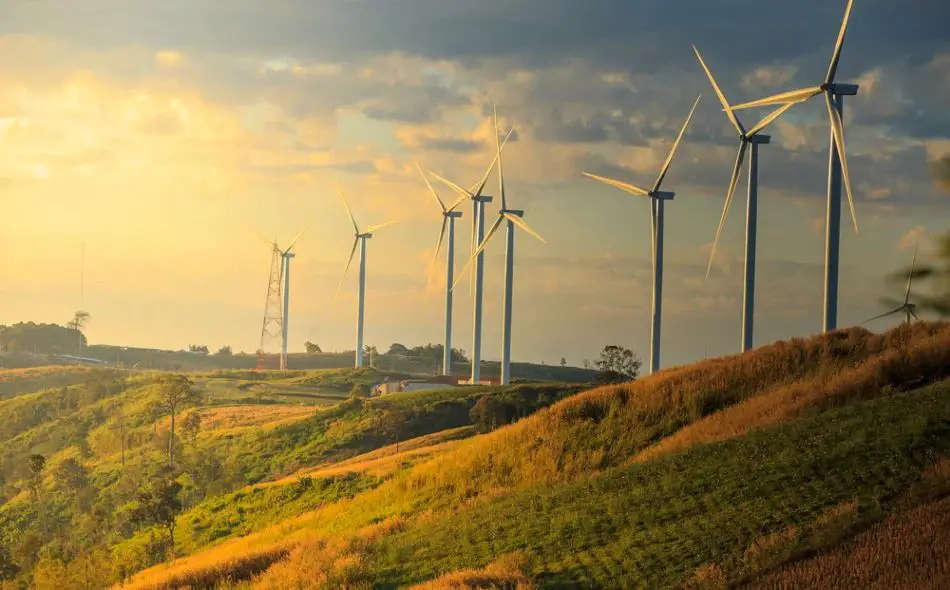
Battery storage and pumped hydro storage can store excess wind generation and dispatch it when needed. This not only improves reliability but also smooths out fluctuations in wind power. Integrated storage systems are a promising technology to provide firm capacity and maximize wind power benefits (ResearchGate, 2006).
Capacity Factors
The capacity factor is a measure of the average power output of a wind turbine or wind farm over time. It represents the ratio of the actual energy produced over a period of time, compared to the hypothetical maximum energy that could have been produced if the turbine operated at 100% capacity over that same timeframe.
According to the U.S. Energy Information Administration, the average capacity factor for wind turbines in the United States in 2019 was around 35%. This means that on average, wind turbines produced only about 35% of the energy they would have produced if operating at full capacity all year long. Capacity factors can vary significantly by region and project based on wind resource quality.
For comparison, nuclear plants often operate near 90% capacity, while solar PV is around 25%. Fossil fuel plants are often in the range of 40-60%. The intermittency of wind leads to lower capacity factors, but geographic diversity and advanced grid management can help make output somewhat more consistent.
According to one study from Western Europe, capacity factors ranged from around 20% in France to over 45% in Ireland and parts of the UK, with most countries averaging 30-40%:http://euanmearns.com/quantifying-wind-surpluses-and-deficits-in-western-europe/
Integrating Wind onto the Grid
Wind energy can be successfully integrated onto power grids and balanced with supply and demand. Grid operators have extensive experience managing variability and uncertainty on the grid and incorporating wind energy in real time (https://www.energy.gov/eere/wind/articles/how-wind-energy-became-integral-modern-grid). Sophisticated weather forecasting reduces uncertainty and enables grid operators to schedule backup generation and plan for wind variability. Areas with high wind penetration have shown they can reliably integrate large amounts of wind energy without sacrificing reliability.
Advances in power electronics, demand response, energy storage, and smart grid technologies provide new ways to accommodate wind variability. Wind turbines can act similarly to conventional power plants and provide grid services such as voltage control, reactive power, active power controls, ramp-rate control, and frequency response. Overall, integrating wind onto the grid is feasible with proper planning, forecasting, and grid management technologies (https://www.nrel.gov/wind/grid-systems-integration.html).
Geographic Diversity
Wind power output varies based on location due to differences in wind patterns and weather across regions. Areas that experience steady wind from consistent weather patterns or geographic features like coastlines will generate more reliable wind power. In contrast, inland areas with variable wind speeds and directions will have greater fluctuations in generation. As a result, connecting wind farms across broad geographic areas helps balance out intermittency issues.
For example, a drop in wind generation in one region can be offset by increased output in another region, allowing the overall supply to remain more stable. Studies have shown that interconnecting wind farms across just a few hundred miles can significantly reduce aggregate variability. According to Xu 2022, wind energy can produce energy at any time of the day with sufficient geographic diversity. By distributing wind farms and effectively sharing power between regions, the reliability and capacity value of wind power improves.
Emerging Technologies
The wind power industry is constantly innovating and developing new technologies to improve efficiency and lower costs. Some key emerging technologies include:
Larger turbines – Wind turbines have been growing in size and capacity, with leading manufacturers like Siemens and GE developing turbines up to 10-15 MW in capacity. Larger turbines can capture more wind energy and reduce overall costs through economies of scale.1
Floating wind turbines – Floating wind platforms allow turbines to be installed in deeper waters further offshore where winds are stronger and more consistent. While still in the demonstration phase, floating wind has huge potential, especially for countries with deep coastal waters like Japan and the US.2
Airborne wind energy – Novel high altitude wind energy concepts are being researched, including tethered kites, drones, and gliders that harvest wind energy at altitudes over 1,000 feet where winds are faster and more consistent. However, major technical challenges remain.3
Comparisons to Other Sources
Compared to other energy sources, wind power has moderate reliability. Fossil fuels like natural gas and coal can generate electricity continuously, making them more reliable than wind. However, they produce greenhouse gas emissions that contribute to climate change. On the other end of the spectrum, solar power relies on sunny weather, so its generation fluctuates daily and seasonally. During the night or periods of cloudy weather, solar generation drops off unless battery storage is available.
One of the most reliable energy sources is nuclear power, which has average capacity factors over 90%, compared to 35-45% for wind power. The high reliability of nuclear comes from the ability to continuously refuel the reactor. However, high upfront costs, safety concerns, and radioactive waste make nuclear less appealing than wind. Overall, wind strikes a balance between reliability and sustainability that makes it a viable option as part of a diverse energy mix.
Conclusion
In summary, wind power offers several advantages as an energy source, including no fuel costs, no air pollution or carbon emissions, and low operating costs once installed. However, the main challenges with wind are its intermittent and variable nature, which requires grid operators to manage fluctuations in output. Technologies like advanced forecasting, geographic diversity, battery storage, and grid modernization are helping to overcome these issues and allow greater shares of wind on electricity systems. While still intermittent, wind power can play a major role in energy portfolios when balanced with more stable sources like hydro, geothermal, nuclear, and solar. Overall, wind is a renewable, low-carbon source of electricity that continues to grow as costs fall and supportive policies expand globally. With appropriate planning and grid integration, wind power can reliably contribute significant electricity generation worldwide.

